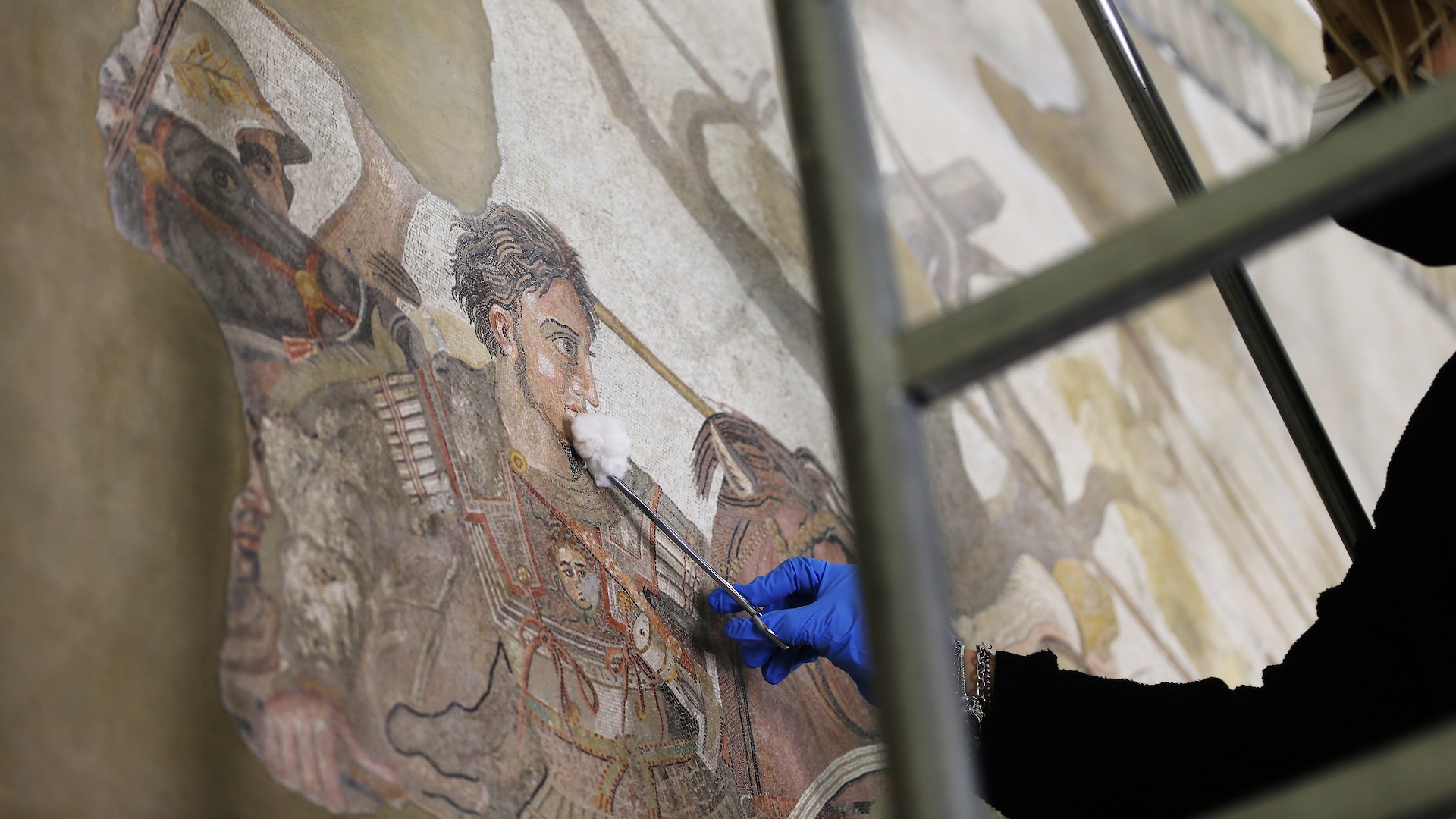
An iconic Alexander the Great mosaic found at Pompeii got its roughly 2 million pieces from quarries that extended far beyond Alexander's ancient kingdom, a new study finds.
While Alexander's empire stretched from the Balkans to modern-day Pakistan, these bits of stone and mineral, or tesserae, came from quarries across Europe — including in Italy and the Iberian Peninsula — as well as from Tunisia, according to the study, which was published Wednesday (Jan. 15) in the journal PLOS One.
What is the Alexander Mosaic?
The roughly 2,000-year-old mosaic was buried in Pompeii when Mount Vesuvius erupted in A.D. 79. It was discovered in 1831, when archaeologists unearthed it in a wealthy family's "domus" known as the House of the Faun, and it's now on display at the National Archaeological Museum of Naples.
The Alexander Mosaic is considered "the most important mosaic of the Roman age," the authors wrote in the study. It depicts Alexander, who ruled from 336 to 323 B.C., and the Macedonian army triumphing over the Persian king Darius III and his forces. The lone tree in the background hints that this is the Battle of Issus, which took place in 333 B.C. by what is now the Turkish-Syrian border. According to Arab and medieval texts, including from Marco Polo, this battle was known to locals as the "battle of the dry tree" (or "the solitary tree"), the researchers wrote in the study.
Related: Why didn't Alexander the Great invade Rome?
In 2020, the National Archaeological Museum of Naples launched a restoration project that entailed noninvasively studying the mosaic. The team employed several techniques, including portable X-ray fluorescence (pXRF), which uses X-rays to help identify elements within an object. They found that the "tesserae were composed of ten types of colors masterfully combined to enhance artistic effects characterizing the Alexander Mosaic," the researchers wrote in the study.
The 10 colors included shades of white, brown, red, yellow, pink, green, gray, blue, black and vitreous (glassy), which had a large range of micro-textures that were "masterfully combined to enhance artistic effects of the artworks," the researchers wrote in the paper.

Ancient artisans paid particular attention to Alexander's face, the team noted. It is "composed of several shades of pink tesserae with appreciable changes in luminescence effects likely related to different chemical composition of the tesserae," they wrote in the study. Details like this explain why this is "perhaps the most iconic and well-known representation of his face in ancient art," they noted.
As for the origins of the tesserae, the scientists looked at quarries that were used in Roman times. For instance, "Some of the white tesserae could be related to the Marmor Lunensis [white crystalline limestone] from the Apuan Alps quarries (Italy), which started to be mined for marble in the 1st century BCE and was no longer used starting from the 3rd century CE," the team wrote in the study.
Meanwhile, the intense pink tesserae may have come from Portugal, some of the yellow blocks may have come from the Roman city of Simitthus in what is now Tunisia, and dark red pieces may be from Cape Matapan, Greece, they wrote.
The team also detected traces of natural wax and the mineral gypsum, which were likely applied as a protective layer during restoration projects in the modern era, the team wrote in the study.
An endoscopic investigation on the mosaic's backside showed "many empty portions" that were likely missed by the gypsum-based substances, which were likely added to support the structure during its transit from Pompeii to the museum. "These potential areas of weakness should be taken into due consideration during restoration," the researchers wrote in the study.







